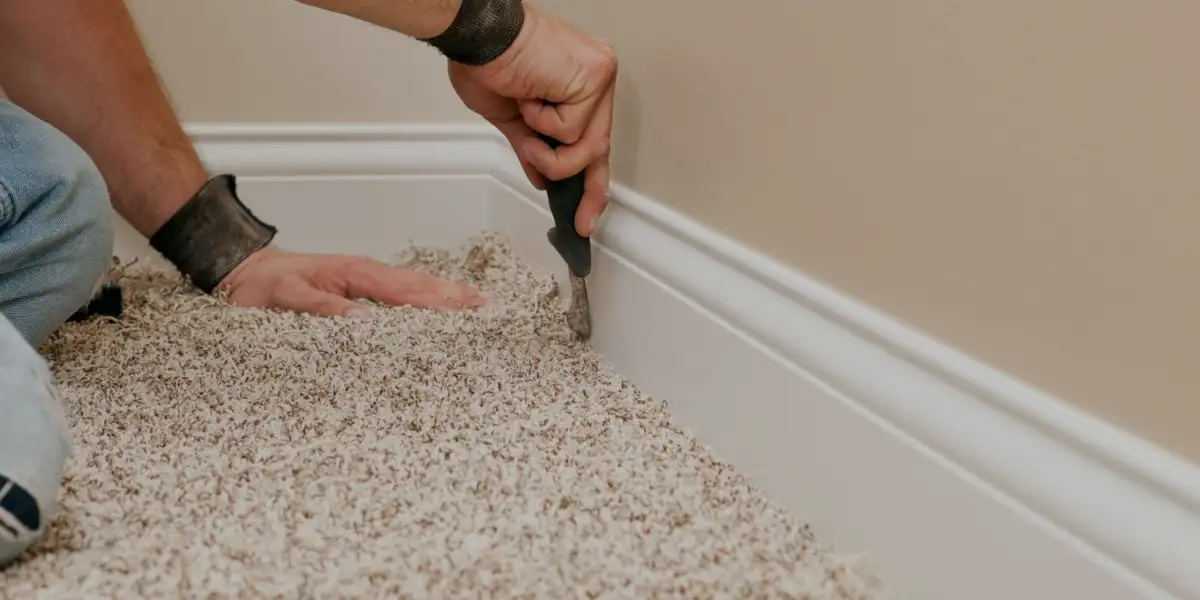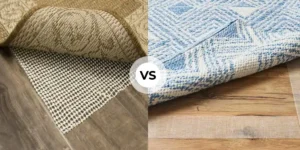Are you looking to install carpet in your home? Well, it is a good idea. You may not know that not only you but also many homeowners prefer carpets to their homes.
Because it provides insulation, reduces noise, and adds comfort to any room. It also helps protect the floor from wear and tear.
However, during the carpet installation, a question arises: ‘Can You Install Carpets Without Removing Baseboards?’
The simple answer is yes. You can install the carpet without removing the baseboard. It is a practical and efficient option.
Also, baseboards prevent carpet edges from fraying or lifting over time. Moreover, it provides a seamless, aesthetically pleasing border between carpet and wall.
In this guide, we’ll explore the idea of installing carpet without removing the baseboard. Also, making it an easy and affordable option for DIY enthusiasts.
Can You Install Carpets Without Removing Baseboards?
Yes, the carpet can be installed without removing the baseboards. Plus, it is a fast and cost-effective option and it’s also less likely to cause damage to the walls and floors.
However, some baseboards may not be compatible with carpets, and you may need to replace them before installing carpets.
So, before you choose your carpet, be sure to check the baseboard to make sure it is compatible with the carpet. If not, you may need to replace the baseboard before installing the carpet.
How to Maintain the Beauty of the Baseboard during Carpet Installation?
When installing carpet, use caution and precision to maintain the beauty of the baseboards. A neat trick is to throw on some painter’s tape along the top edge of the carpet to shield it.
Make sure the carpet is properly cut and tucked against the baseboard. If any residual adhesive remains after installation, clean it immediately.
Also, professional installation and regular cleaning contribute to preserving the baseboard’s aesthetic appeal.
What are the Common Issues during Carpet Installation?
#1 Uneven Subfloor
- Issue: When you install the carpet on an uneven subfloor, it can lead to affecting its appearance and longevity.
- Solution: The solution is to assess and address any subfloor irregularities before installation. A smooth foundation may require leveling compounds or plywood underlayment.
#2 Wrinkles or Bubbles
- Issue: During carpet installation, if the carpet is not properly stretched, it can cause wrinkles or bubbles in the carpet.
- Solution: To prevent this issue, you should ensure proper stretching using a power stretcher. In this way, you can remove any debris for a taut and smooth carpet surface.
#3 Carpet Trimming Difficulties
- Issue: When cutting carpet at corners or edges, accuracy is crucial to ensure a seamless appearance.
- Solution: Start with careful measurements, then trim with a utility knife and a straight edge. By following this method, you will achieve a perfect fit as well as a polished appearance.
#4 Misaligned Baseboards
- Issue: When you fit your baseboards incorrectly, it can create uneven gaps between surfaces. Plus, it hinders a seamless installation and detracts from the overall look.
- Solution: Make sure the baseboards are level and straight before installing the carpet. Additionally, it is important to adjust or reinstall baseboards to achieve proper alignment.
#5 Unsuitable Padding
- Issue: Adequate padding poses comfort and durability challenges during carpet installation. When the carpet is chosen incorrectly or is too thin, it will lack support, wear quickly, and perform badly.
- Solution: It is best to work with professionals to ensure compatibility with specific carpet types and traffic patterns.
Step-by-Step Guide to Installing Carpets Without Removing Baseboards
Step 1: Materials and Tools Needed
- Carpet
- Carpet padding
- Carpet adhesive or double-sided tape
- Utility knife
- Measuring tape
- Straightedge
- Tack strips
- Knee kicker
- Power stretcher
Step 2: Prepare the Area
Before installing carpet, it is important to prepare the installation area. Start by clearing out the space – kick out all furniture, sweep away dust, and show the door to any debris.
Then, you’ll ensure the subfloor is clean and smooth, smoothing out any imperfections.
A properly cleaned surface ensures optimal adhesion of the padding and carpet. Also, it contributes to a smooth and successful installation without the need to remove the baseboard.
Step 3: Measure and Cut the Carpet
After preparing the area, you should measure the area. So, use a measuring tape and a straightedge to measure the room dimensions accurately.
Then, you will plan the carpet layout. After that, you will roll out the carpet and then you will use a sharp utility knife to cut the carpet carefully.
Step 4: Install the Carpet
Once you have cut your carpet correctly, the next step is to properly install the carpet. In the beginning, you should apply the adhesive evenly over the subfloor, starting in the center and working toward the edges.
Now, be patient, and allow the adhesive to set according to the product’s instructions. Once it’s all good to go, lay that carpet down carefully, making sure it snuggles perfectly into place.
Step 5: Trim Excess Carpets
You will need a straightedge and a sharp utility knife to trim the excess carpet along the walls. It is important to pay attention to the corners and edges so that you can ensure a neat and precise fit.
This will not only make the area look better but also permit a seamless transition and a professional carpet installation.
Step 6: Stretch the Carpet
During carpet installation, tighten the carpet over the tack strips with a knee kicker and power stretcher. Furthermore, a power stretcher can remove wrinkles or bubbles from your skin.
In addition, this ensures a smooth and taut carpet surface, enhancing its longevity and appearance.
Step 7: Final Inspection
Ensure that the entire carpeted area is free of imperfections or loose edges. Keep the carpet neatly tucked against the baseboards to ensure a finished look. If any adjustments are necessary, make them and trim any excess.
The Pros and Cons of Installing Carpets Without Removing Baseboards
Pros
- It’s faster and more efficient to install carpets without removing baseboards.
- Baseboard removal costs are reduced with this method, making it more cheap.
- Maintains the existing baseboards to maintain the room’s aesthetic integrity.
- This method eliminates the disturbance of removing and reinstalling baseboards.
- It simplifies the installation process, making it easier for DIY enthusiasts.
Cons
- The carpet edges may not tuck as neatly against the baseboards.
- Makes inspection and preparation difficult due to restricted access.
- It may cause premature wear along the carpet edges, possibly shortening its lifespan.
Also See: How To Fill A Gap Between Carpet & Baseboard
Check Out More Articles Related to Floorings:
- Why Does Your Floor Make Your Feet Black? (7 Main Reasons)
- Do You Put Vinyl Flooring Under Appliances? (Answered & Explained)
- Can I Use Laminate Flooring On Walls? (Installation Guide Included)





